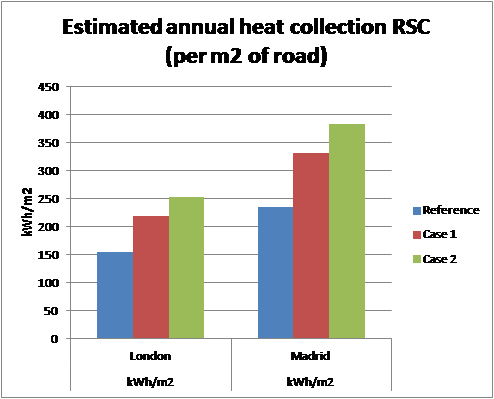“Leadership is not about being in charge. It is about taking care of those in your charge.”
— Simon Sinek
THE ART OF LEADERSHIP
Caring Command
How Serving Your People Builds Trust, Sparks Initiative, And Sustains Purposeful Organizational Long-Term Momentum
Teams do their best work when they feel protected, not pressured. The emotional calculus is simple: if I believe my leader would sacrifice comfort to shield me, I will stretch further than compensation alone could entice. Safety breeds trust; trust unlocks creativity; creativity fuels performance. Culture, therefore, begins with consistent acts of guardianship.
Unfortunately, many managers invert the equation, chasing metrics before mindsets. They demand compliance, then wonder why discretionary effort remains obstinately low. Results are an echo, not a starting gun. When the circle of safety shrinks, self-interest expands to fill the gap, and organizations slowly suffocate beneath spreadsheets filled with yesterday’s diminishing returns alone.
Begin reversing that decay by practicing small, observable generosity today. Ask your teammate what removes stress from their week, then make it happen. Credit others publicly, accept blame privately, and watch morale tilt upward. Over time, the pattern becomes contagious; soon, people protect one another instinctively, liberating collective energy to pursue audacious, shared visions.
Offer one act of support to a colleague, strengthening trust and growing a culture of mutual care.
COMMERCIAL CONSTRUCTION
Miami Unveils $600M Concourse K, Airport Capacity Soars
First terminal expansion since 2007 adds six gates, green systems, and thousands of jobs at MIA
Miami-Dade commissioners have green-lit a $600.6 million design-build contract for Concourse K, launching Miami International Airport’s first terminal expansion in eighteen years. The Lemartec–NV2A joint venture will break ground later this summer, pushing the South Terminal fifty feet east and stitching the new pier seamlessly into existing passenger flows.
Designed by Perez & Perez Architects, the concourse will introduce six contactless domestic gates equipped with biometric boarding, an expanded baggage handling matrix, and an aircraft apron tied to a new jet-fuel hydrant grid. A ground-support equipment shop and rooftop solar array aim to reduce turnaround times while cutting operational emissions by twenty-five percent.
Project managers estimate 3,200 construction jobs and 1,400 permanent positions, supporting record demand after MIA handled 56 million passengers in 2024. Upon its spring 2029 debut, Concourse K’s smart stands will lift the hub’s annual capacity by eight million travelers, boosting South Florida’s tourism economy and reinforcing the airport’s ambition to rank among the world’s top ten international gateways firmly within the next decade.
INFRASTRUCTURE INDUSTRY
Las Vegas Builds First Self-Cooling Highway Using Mirrors
Reflective roadway skin bounces sunlight, lowers asphalt temperature, and channels waste heat into solar thermal collectors
Construction crews outside Las Vegas this week began laying a glimmering experimental surface on Interstate 15, embedding thin, mirrored tiles into the top layer of asphalt. The Nevada Department of Transportation states that the self-cooling layer will reflect up to 50 percent of incoming solar radiation, reducing midday pavement temperatures by 40 degrees and doubling the lifespan of asphalt.
Engineers collaborated with UNLV researchers to blend recycled glass, aluminum flakes, and a polymer binder, producing an ultra-bright mosaic that still meets skid-resistance standards. Embedded fiber-optic sensors will stream real-time temperature and strain data to a public dashboard, allowing planners to compare heat-island impacts against conventional blacktop lanes running beside the pilot section.
If post-summer testing confirms projections, the agency will extend the treatment across thirty desert miles by 2027, harvesting excess heat through subsurface water loops to drive thermoelectric generators that feed roadside electric vehicle chargers. Officials estimate that the hybrid cooling-energy system could save $8 million annually in maintenance while reducing tire wear and greenhouse gas emissions.
RESIDENTIAL RESEARCH
Hero Village Offers 20,000 Homes to NYC Rescuers
Floyd Bennett Field makeover proposes flood-proof home cluster for essential-service workers battling New York's housing crunch.
On May 31, Brooklyn entrepreneur and former EMT Noah Martz unveiled “Hero Village,” a 20,000-unit housing concept repurposing Floyd Bennett Field’s runways into a car-lite grid for New York police, firefighters, and paramedics. The plan arrives as rents top $4,000, forcing many local first responders into exurban commutes.
Concept sketches show modular buildings perched on concrete stilts to address flood risk. Streets would honor fallen rescuers, while a rail spur and ferries could link residents to downtown Brooklyn in twenty minutes. Martz claims the village could cost 15 percent less than typical city projects by using factory-assembled timber panels.
Supporters include the Uniformed Firefighters Association, which argues affordable on-call housing could shave response times during coastal storms. Critics, notably Councilwoman Joann Ariola, counter that the airfield is located in a FEMA flood zone and lacks adequate sewer infrastructure. Martz says he will petition the National Park Service this week for a long-term lease and hopes to begin formal environmental review by early December.
TOOLBOX TALK
The Importance of Avoiding Distractions While Operating Equipment
Introduction
Good morning, Team! Today's toolbox talk highlights the importance of avoiding distractions while operating equipment. Being distracted significantly increases the risk of accidents and injuries.
Why It Matters
A split second of distraction can cause equipment collisions, worker injuries, or fatalities. Staying focused keeps everyone safe on site.
Strategies to Avoid Distractions
Eliminate Mobile Device Use:
Never use phones or electronics while operating machinery.
Keep Work Areas Clear:
Maintain tidy cabins and workstations to avoid unnecessary distractions.
Focus on the Task:
Concentrate fully on the equipment and task at hand, avoiding multitasking.
Use Spotters When Needed:
Rely on trained spotters to manage surrounding activities, enabling better operator focus.
Speak Up:
Notify your supervisor immediately if distractions compromise your concentration.
Discussion Questions
Have you witnessed incidents caused by operator distraction?
How can we better reduce distractions on-site?
Conclusion
Avoiding distractions protects lives. Stay alert, focused, and fully engaged in operating equipment.
Stay focused, stay safe!








